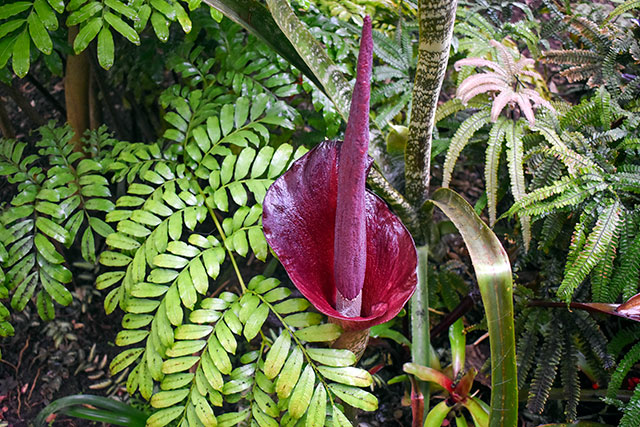
Blooming only once a year on average, bearing witness to the opening of the corpse flower is special.
“This plant requires specific and consistent environmental conditions to flower, which can happen every year around early spring in the HSU campus greenhouse,” says Brianne Lee, HSU’s greenhouse manager.
Not actually a single flower but an inflorescence (a stalk of many flowers), the plant can grow to 36 inches wide, with the inflorescence growing up to 72 inches. Native to warm subtropical to tropical areas of eastern Asia, the corpse flower is commonly grown in research greenhouses and seduces both botanists and gardeners with its botanical complexity.
The smell of the blooming plant—which is often described as a feral, decaying odor akin to rotting flesh— is actually to the plant’s benefit. The inflorescence contains nodules that emit an odor to attract the flower’s primary pollinators: dung beetles, carrion flies, and other scavenger insects. Along with the royal burgundy color and elevated body-like temperature (98 degrees), the funky smell serves the biological function of imitating a dead animal to attract pollinators who may be searching for a suitable site to lay eggs. Once pollination is complete, the flower collapses, a process that takes only two to three days.
“The corpse flower is a unique and valuable addition to any university’s teaching greenhouse,” says HSU Botany instructor Stefani Brandt. “For my labs in Plant Taxonomy, I use the corpse flower as a prime example of how species adapt to attract quality pollinators in order to successfully reproduce.”
Giving a fleeting but spectacular performance this week, HSU’s own corpse flower is an incredible example of the ingenuity of the plant kingdom.
As a reminder, the HSU campus is currently closed to the public due to the coronavirus pandemic. No one is permitted admittance to the greenhouse at this time.